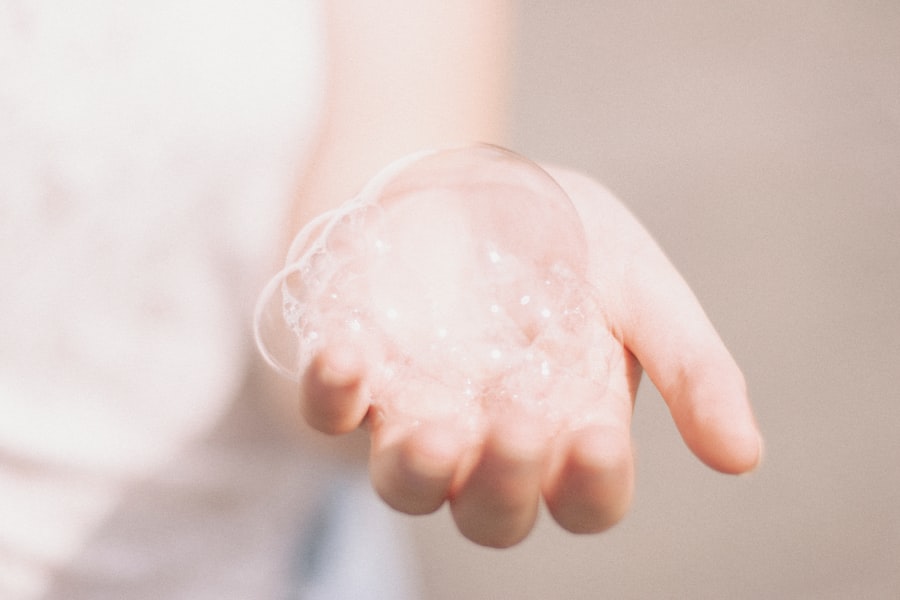When you consider laser hair removal, it’s essential to grasp how the process works. At its core, laser hair removal utilizes concentrated beams of light to target and destroy hair follicles. The laser emits a specific wavelength that is absorbed by the pigment in the hair.
This absorption generates heat, which damages the follicle and inhibits future hair growth. The procedure is most effective on individuals with light skin and dark hair, as the contrast allows the laser to focus more effectively on the hair pigment. Before undergoing treatment, you will typically have a consultation with a qualified professional.
During this session, they will assess your skin type, hair color, and medical history to determine if you are a suitable candidate for the procedure. You may also discuss your expectations and any concerns you might have. It’s crucial to be open and honest during this consultation, as it sets the foundation for your treatment plan.
The number of sessions required can vary based on individual factors, but most people need multiple treatments to achieve optimal results.
Key Takeaways
- Laser hair removal targets hair follicles with concentrated light to inhibit future hair growth
- After treatment, avoid sun exposure and use gentle skincare products to prevent irritation
- Potential side effects include redness, swelling, and skin sensitivity, which can be managed with cold compress and moisturizing creams
- Long-term results may require multiple sessions, and maintenance treatments may be needed to sustain hair reduction
- A recommended skincare routine after laser hair removal includes gentle exfoliation and moisturizing to keep the skin healthy and smooth
Post-Treatment Care and Precautions
After your laser hair removal session, proper post-treatment care is vital for ensuring the best results and minimizing any potential discomfort. Initially, you may experience some redness or swelling in the treated area, similar to a mild sunburn. To alleviate this, applying a cool compress can be beneficial.
Additionally, your practitioner may recommend soothing creams or gels that can help calm the skin and reduce inflammation. It’s also important to avoid sun exposure for at least a few weeks following your treatment. Your skin will be more sensitive to UV rays, and exposure can lead to pigmentation changes or irritation.
Wearing sunscreen with a high SPF is essential if you must go outdoors. Furthermore, refrain from using harsh skincare products or engaging in activities that may irritate the skin, such as hot baths or vigorous exercise, for a few days post-treatment. Following these precautions will help ensure that your skin heals properly and that you achieve the best possible outcome from your laser hair removal sessions.
Potential Side Effects and How to Manage Them

While laser hair removal is generally considered safe, it’s important to be aware of potential side effects that may arise. Common side effects include temporary redness, swelling, and mild discomfort in the treated area. These symptoms usually subside within a few hours to a couple of days.
However, if you experience prolonged discomfort or any unusual reactions, it’s crucial to contact your practitioner for advice. In some cases, individuals may experience changes in skin pigmentation, particularly if they have darker skin tones. This can manifest as either hyperpigmentation (darkening of the skin) or hypopigmentation (lightening of the skin).
To manage these side effects, it’s advisable to follow your practitioner’s aftercare instructions closely. If pigmentation changes occur, topical treatments or procedures may be recommended to help restore your skin’s natural tone. Being proactive about monitoring your skin’s response can help you address any issues early on.
Long-Term Results and Maintenance
| Metrics | Results |
|---|---|
| Customer Retention Rate | 85% |
| Annual Revenue Growth | 10% |
| Employee Satisfaction | 90% |
| Product Quality Index | 95% |
One of the most appealing aspects of laser hair removal is its potential for long-term results. Many individuals experience a significant reduction in hair growth after completing their treatment sessions. While some may see permanent hair removal in certain areas, others might notice that fine or lighter hairs can still grow back over time.
This is why maintenance sessions are often recommended every six months to a year to keep unwanted hair at bay. The longevity of your results can depend on various factors, including your hair type, hormonal changes, and individual response to treatment. It’s essential to maintain realistic expectations; while laser hair removal can drastically reduce hair growth, it may not eliminate it entirely for everyone.
Regular follow-up sessions can help you maintain smooth skin and ensure that any regrowth is minimal and manageable.
Recommended Skincare Routine After Laser Hair Removal
Establishing a proper skincare routine after laser hair removal is crucial for maintaining healthy skin and enhancing your results. Start by keeping the treated area clean and moisturized. Use gentle cleansers that are free from harsh chemicals or fragrances to avoid irritation.
After cleansing, apply a soothing moisturizer that contains calming ingredients like aloe vera or chamomile to help hydrate and protect your skin. In addition to moisturizing, incorporating sunscreen into your daily routine is non-negotiable. As mentioned earlier, your skin will be more sensitive post-treatment, making it susceptible to sun damage.
Choose a broad-spectrum sunscreen with an SPF of 30 or higher and reapply it regularly if you’re spending extended periods outdoors. Avoiding excessive heat exposure from saunas or hot tubs for at least a week after treatment is also advisable, as this can exacerbate irritation.
Tips for Maximizing the Benefits of Laser Hair Removal

To get the most out of your laser hair removal experience, there are several tips you can follow. First and foremost, adhere strictly to your treatment schedule as recommended by your practitioner. Consistency is key when it comes to achieving optimal results; missing sessions can prolong the process and diminish effectiveness.
Additionally, avoid waxing or plucking hair between sessions, as these methods can disrupt the hair growth cycle that laser treatments rely on. Shaving is typically allowed and even encouraged before treatments since it leaves the hair follicle intact while removing surface hair that could interfere with the laser’s effectiveness. Lastly, maintaining a healthy lifestyle can also contribute positively; staying hydrated and eating a balanced diet supports overall skin health and recovery.
Common Misconceptions About Laser Hair Removal
Despite its growing popularity, several misconceptions about laser hair removal persist. One common myth is that the procedure is extremely painful. While some individuals may experience mild discomfort during treatment, many describe it as tolerable—often likening it to the sensation of a rubber band snapping against the skin.
Advances in technology have also led to more comfortable devices equipped with cooling mechanisms that minimize discomfort.
While it is true that the treatment works best on individuals with light skin and dark hair due to the contrast in pigmentation, advancements in laser technology have made it possible for people with various skin tones and hair colors to benefit from this procedure.
Consulting with a qualified professional can help clarify any doubts you may have regarding your suitability for treatment.
Consultation with a Dermatologist or Professional for Personalized Advice
Before embarking on your laser hair removal journey, scheduling a consultation with a dermatologist or licensed professional is essential. This initial meeting allows you to discuss your specific needs and concerns while receiving personalized advice tailored to your unique situation. A qualified practitioner will evaluate your skin type, medical history, and desired outcomes to create an individualized treatment plan.
During this consultation, don’t hesitate to ask questions about the procedure itself, potential side effects, and what you can expect during recovery. Understanding every aspect of the process will empower you to make informed decisions about your treatment options. Remember that open communication with your practitioner is key; they are there to guide you through every step of your laser hair removal experience and ensure that you achieve the best possible results.
In conclusion, laser hair removal offers an effective solution for those seeking long-term hair reduction. By understanding the process, adhering to post-treatment care guidelines, managing potential side effects, and maintaining a proper skincare routine, you can maximize the benefits of this innovative procedure. With informed decisions and professional guidance, you can enjoy smooth skin and newfound confidence for years to come.
After laser hair removal, it is important to follow proper aftercare instructions to ensure the best results. One related article that provides helpful information on post-treatment care is available on the In Laser Hair Removal website. This article discusses the importance of avoiding sun exposure, using gentle skincare products, and staying hydrated to promote healing and reduce the risk of complications. By following these guidelines, individuals can maintain smooth, hair-free skin for longer periods of time. For more tips and advice on laser hair removal treatments, visit In Laser Hair Removal.
FAQs
What is laser hair removal?
Laser hair removal is a cosmetic procedure that uses a concentrated beam of light (laser) to remove unwanted hair. The laser targets the pigment in the hair follicles, damaging them and inhibiting future hair growth.
What happens after laser hair removal?
After laser hair removal, you may experience some redness and swelling in the treated area. The hair may appear to be growing back, but it is often shedding as a result of the treatment. It is important to avoid sun exposure and to follow the aftercare instructions provided by your technician.
How long does it take to see results after laser hair removal?
It typically takes several sessions of laser hair removal to achieve the desired results. Most people will start to see a reduction in hair growth after the first session, but it may take 6-8 sessions to achieve long-lasting results.
Are there any side effects of laser hair removal?
Some common side effects of laser hair removal include redness, swelling, and temporary pigment changes in the skin. In rare cases, blistering, scarring, or changes in skin texture may occur. It is important to discuss any concerns with your technician before undergoing treatment.
How long do the results of laser hair removal last?
The results of laser hair removal can be long-lasting, but they are not always permanent. Some people may experience regrowth of hair over time, which may require maintenance sessions to keep the area hair-free.






